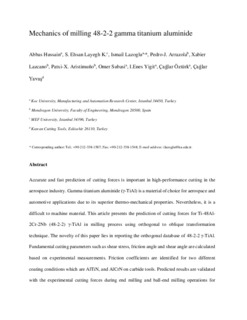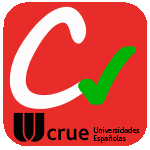Izenburua
Mechanics of milling 48-2-2 gamma titanium aluminideEgilea (beste erakunde batekoa)
Argitalpen data
2020Beste erakundeak
Koç UniversityMEF University
Karcan Cutting Tools
Bertsioa
PostprintaDokumentu-mota
ArtikuluaArtikuluaHizkuntza
IngelesaEskubideak
© 2020 CIRPSarbidea
Sarbide bahituaBahituraren amaiera data
2022-08-01Argitaratzailearen bertsioa
https://doi.org/10.1016/j.cirpj.2020.05.001Non argitaratua
CIRP Journal of Manufacturing Science and Technology Vol. 30. Pp. 131–139, 2020Argitaratzailea
Elsevier Ltd.Gako-hitzak
millinggamma titanium allumide
coating
Laburpena
Accurate and fast prediction of cutting forces is important in high-performance cutting in the aerospace industry. Gamma titanium aluminide (γ-TiAl) is a material of choice for aerospace and automotiv ... [+]
Accurate and fast prediction of cutting forces is important in high-performance cutting in the aerospace industry. Gamma titanium aluminide (γ-TiAl) is a material of choice for aerospace and automotive applications due to its superior thermo-mechanical properties. Nevertheless, it is a difficult to machine material. This article presents the prediction of cutting forces for Ti-48Al-2Cr-2Nb (48-2-2) γ-TiAl in milling process using orthogonal to oblique transformation technique. The novelty of this paper lies in reporting the orthogonal database of 48-2-2 γ-TiAl. Fundamental cutting parameters such as shear stress, friction angle and shear angle are calculated based on experimental measurements. Friction coefficients are identified for two different coating conditions which are AlTiN, and AlCrN on carbide tools. Predicted results are validated with the experimental cutting forces during end milling and ball-end milling operations for different cutting conditions. The simulated results showed good agreement with the experimental results, which confirms the validity of the force model. [-]





















